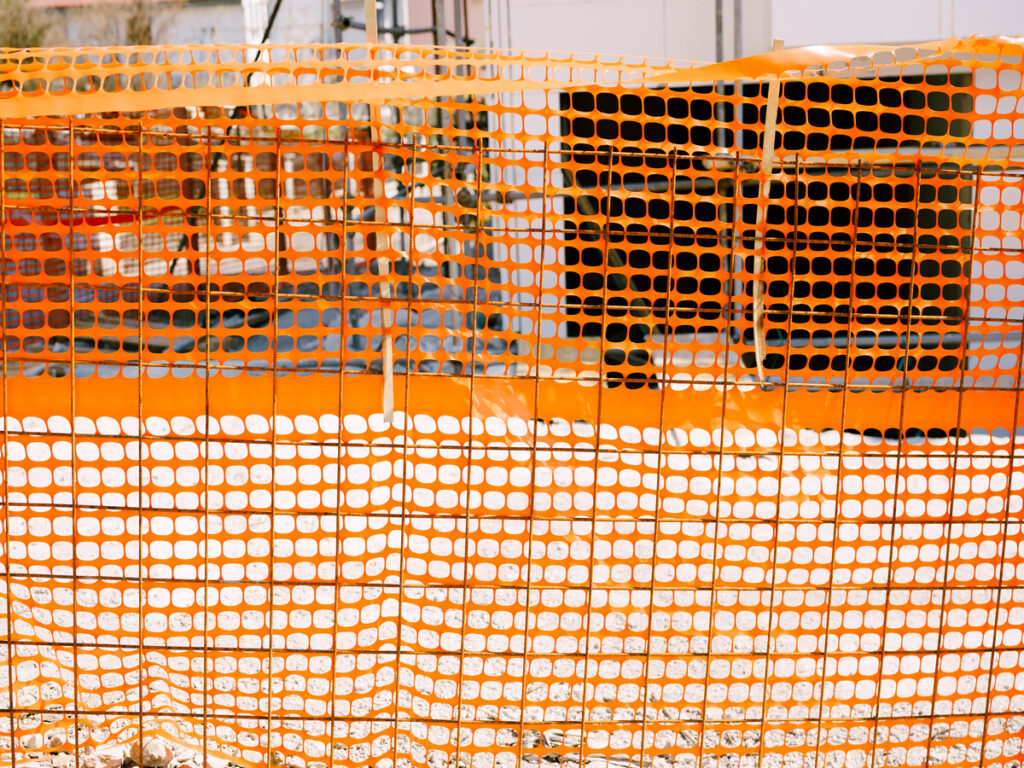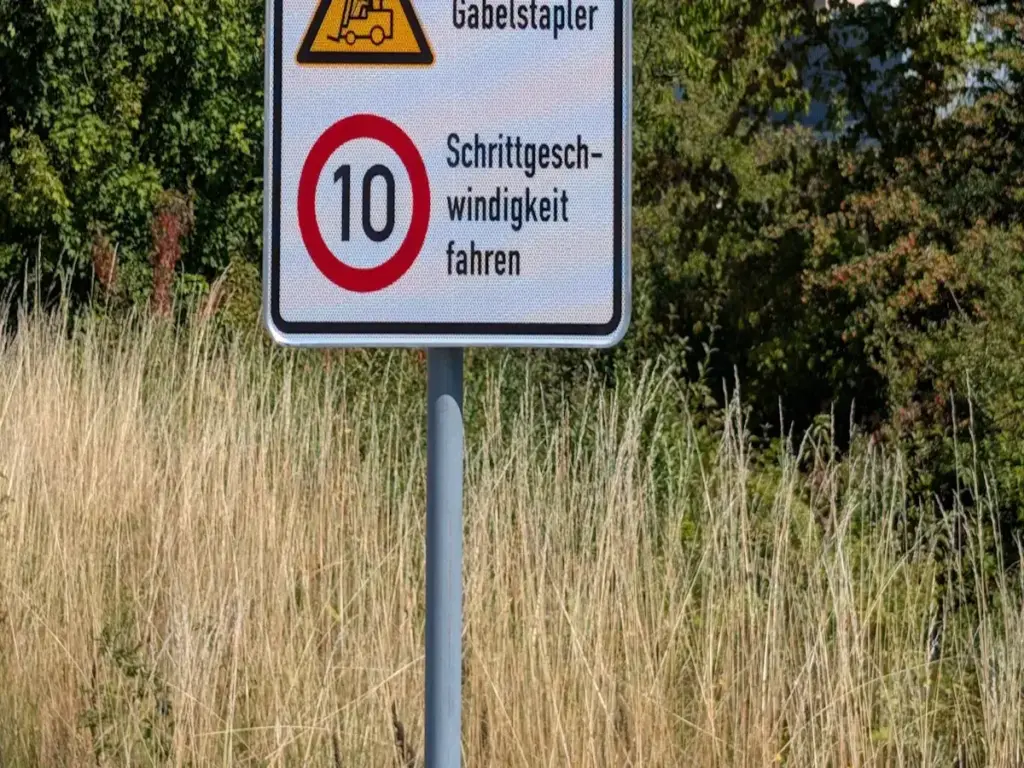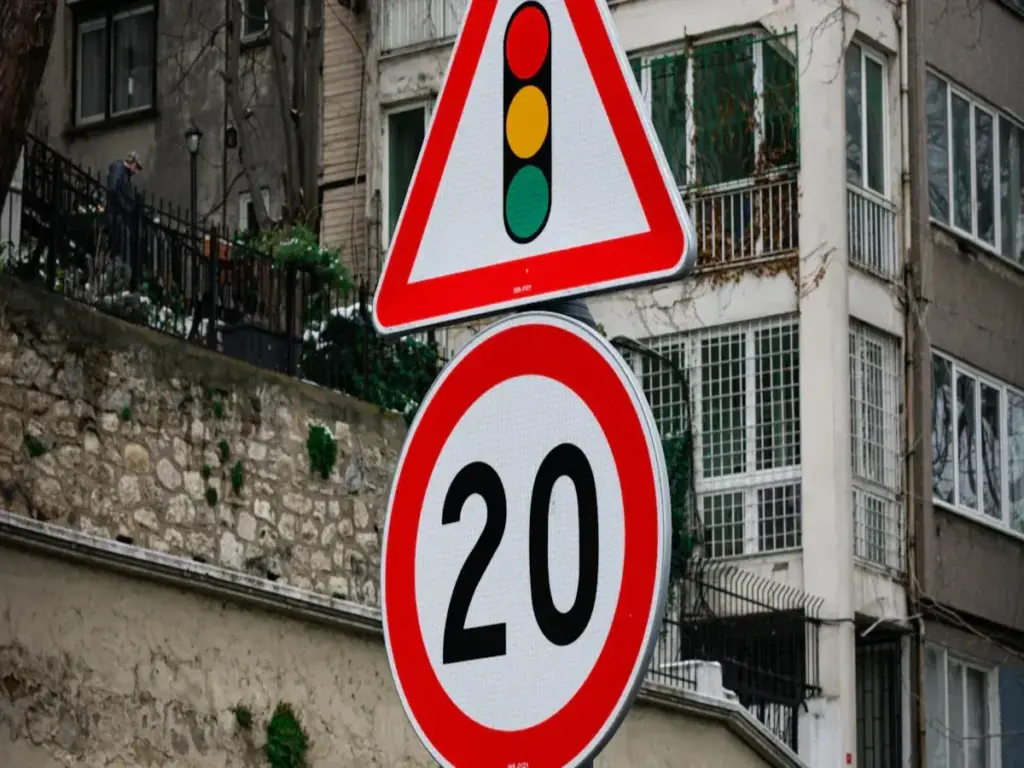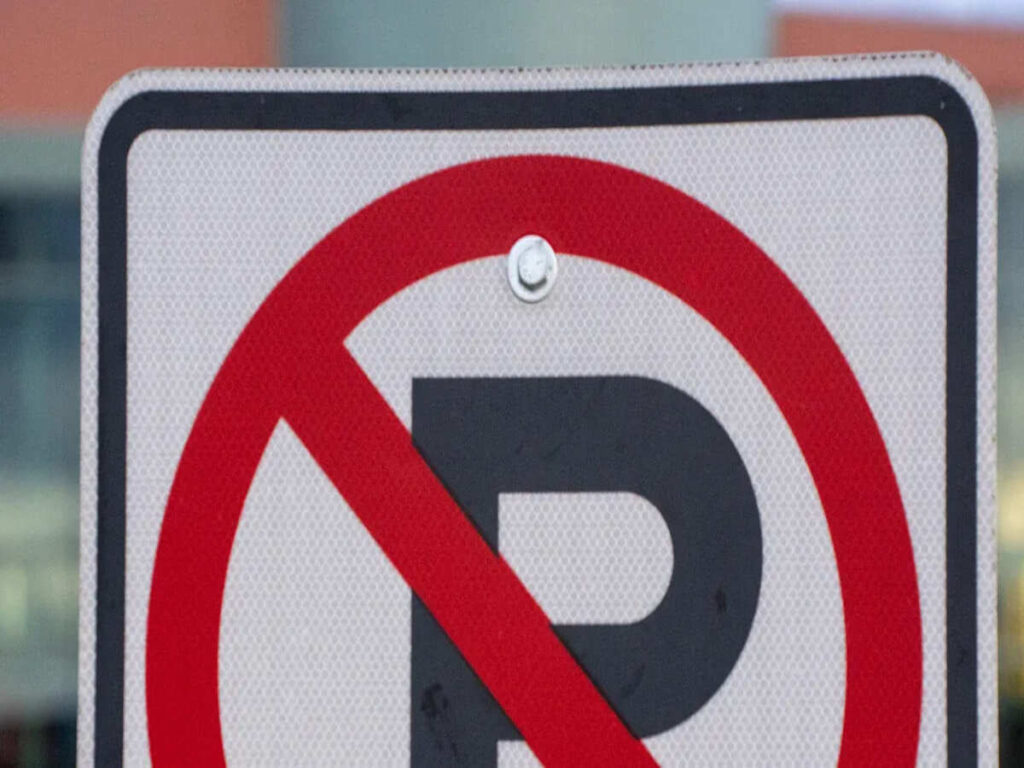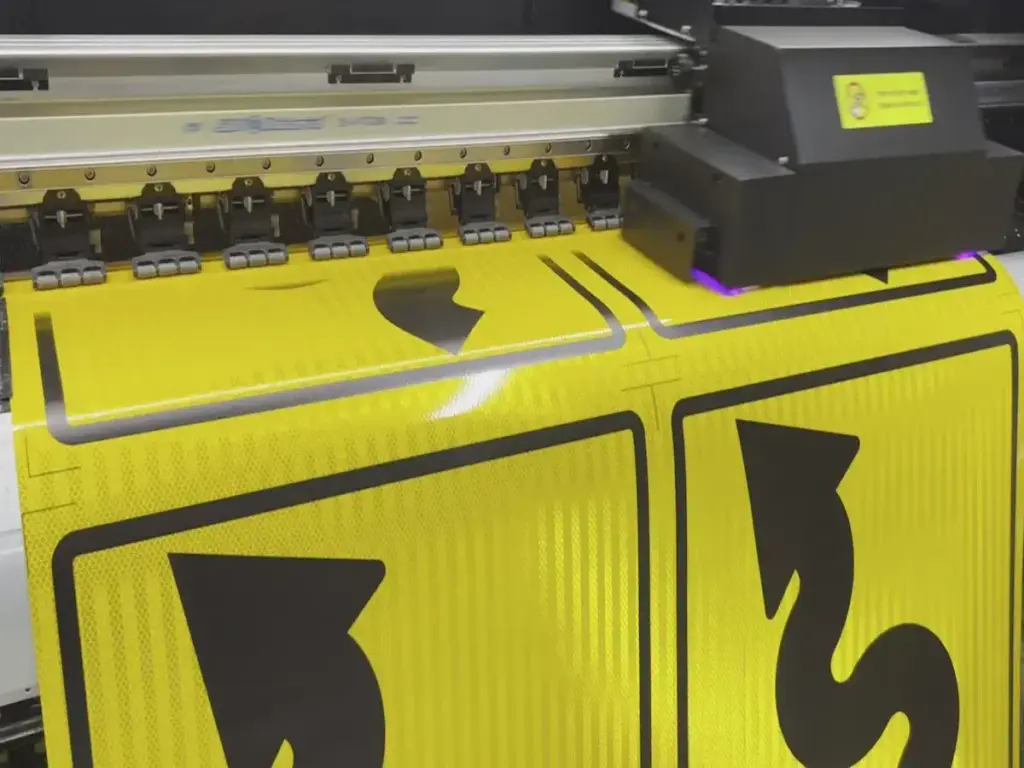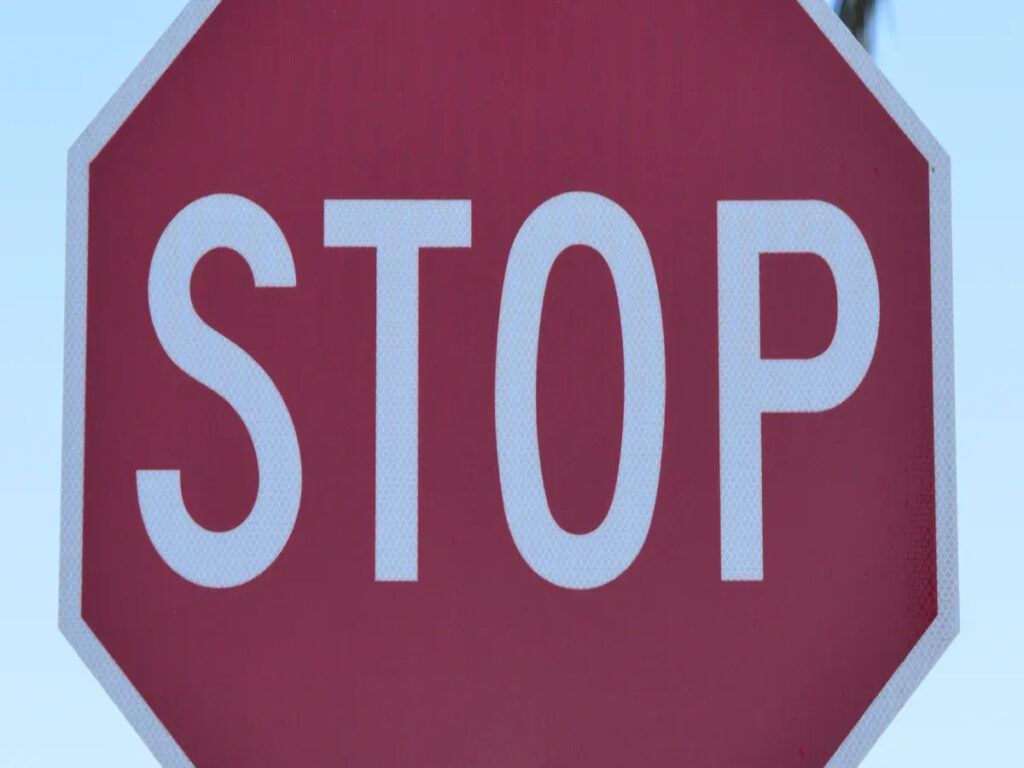
Are traffic stop signs still important in cities equipped with smart technology? Modern roads feature adaptive lights and vehicle-to-infrastructure systems. However, traditional traffic stop signs remain visible at many crossings. Studies indicate that multiway traffic stop signs reduce pedestrian crashes by 25%. Installing traffic stop signs at right angles decreases road accidents by 10.9%. These figures demonstrate the enduring value of clear instructions. While new technology shows promise, established safety measures like traffic stop signs continue to save lives.
At OPTRAFFIC, we combine tradition with innovation. From high-quality traffic signs for sale to smart solutions like VMS boards and Arrow Boards, we deliver everything you need to keep modern roads safe and efficient.
Traffic Stop Signs in Modern Cities
Origins and Purpose
Traffic stop signs have helped cities for a long time. The first stop sign was put up in Detroit in 1914. Sergeant Harold Jackson wanted to make busy crossings safer. This new idea changed how traffic was controlled. More cars were on the roads, so cities needed help. By 1915, Michigan used stop signs in many places. This made roads safer right away. In 1922, the octagonal shape was chosen for stop signs. This shape made them easy to spot, even at night. In 1935, a guidebook set rules for traffic signs. It said what colours and how shiny signs should be. These changes made signs easier to see and read. Drivers could react faster. In 1968, the Vienna Convention showed stop signs were important everywhere. Over the years, stop signs became key for helping drivers and stopping confusion at crossings.
Studies show stop signs make roads safer. When cities change some crossings to all-way stops, cars go slower. Drivers also let people cross more often. One study found that cars slowed down by 60%. More drivers let people cross, going from 45.7% to 76.7%. This shows stop signs help keep everyone safe.
Current Uses Beyond Public Roads
Today, stop signs are used in many places, not just on streets. Car parks use them to keep cars moving safely. Construction sites need stop signs to guide cars and workers. In the countryside, stop signs help when there is no power or internet. Schools and factories use stop signs to keep children and workers safe. Stop signs are easy to see and simple to understand. People know when to stop, even without smart technology. Stop signs are still very important for safety, both in old and new places.
Smart Traffic Systems and Road Safety
Intelligent Traffic Technologies
Cities use new technology to make roads safer. Adaptive traffic lights change when cars are near. Sensors and connected vehicles send data to these lights. This helps traffic move better and cuts down waiting. Vehicle-to-everything (V2X) lets cars and signs talk to each other. They share information right away. This helps drivers find the best way and avoid crashes.
AI control systems use live data to manage traffic quickly. They can change light timings or warn about dangers. One study tested adaptive signals with connected car data. It used a microsimulation platform. The results showed traffic moved better and was safer at busy times. The study also showed V2X and AI work together. They track cars and help control traffic.
Note: Adaptive signs, like LED boards, can change messages. They show new warnings or updates when traffic changes. These signs help drivers notice changes and stay safe.
Enhancing Safety with Smart Solutions
Smart systems try to make travel safer and faster. They use live information to guide cars and help manage roads. For example, adaptive signs can warn or give directions in emergencies. Smart pavements have sensors that check road conditions. They send alerts to control centres.
These tools help stop mistakes by giving clear rules. They also help drivers pay attention. Studies show blanking LED signs can help drivers focus. Smart systems help cars and people move safely in busy places.
But some reviews say more strong studies are needed. We do not know exactly how much these systems stop mistakes. Technology helps roads, but it cannot replace old ways yet. Physical signs and human choices are still needed for full safety and good traffic control.
The Role of Traffic Signs in a Connected World
Physical Signs and Digital Integration
Physical traffic signs are still very important for road safety. Cities use smart technology, but signs help everyone follow the rules. These signs give clear instructions to all road users. If digital systems stop working, signs are always there. Drivers, cyclists, and people walking can trust these signs.
A new study lists six ways physical signs help keep roads safe and clear:
| Type of Redundancy | Description |
|---|---|
| Sign-type–basic task(s) of law | Helps with the main jobs of road traffic law shown on signs. |
| Sign-type’s elements | Extra support within the parts of one sign type. |
| Sign-type–sign-type | Extra support between different types of signs. |
| Sign-type–legal text | Extra support between signs and the written laws they show. |
| Sign-realisation–sign-realisation | Extra support between different versions of the same sign. |
| Sign-realisation–environment | Extra support between signs and their surroundings. |
This table shows that signs do more than just give messages. They are part of the law and help keep things safe. Some features, like colours and pictures, cannot be explained with only words. Physical signs make sure people can see and read them well. This is very important for safety. In a world with smart systems, these signs help both old and new ways to control traffic.
Physical signs are also easier to see now. New coatings help signs glow at night. These coatings charge up in the day and shine after dark. This helps drivers see signs in all weather. Good visibility helps both normal and smart traffic systems, especially when it is dark or during emergencies.
Traffic Sign Recognition and ADAS
Digital signs and recognition systems are now common in cars. Advanced Driver Assistance Systems (ADAS) use cameras and sensors to read signs. These systems help drivers follow the rules and avoid mistakes. Traffic sign recognition (TSR) is very accurate, reaching over 96%. Some systems even get 99% accuracy, even with tricky or new signs.
Car makers like Honda use TSR in their safety tools. The system finds important signs and works with other ADAS features. This helps drivers notice signs and helps self-driving cars. TSR helps cars keep to speed limits and react to road changes. It also warns drivers if they miss a sign.
Recent tests show TSR with ADAS works very well. For example, a model trained on German signs reached 99.4% accuracy. These systems work even in bad weather or when it is hard to see. This is because they use smart sensors and data.
Note: Surveys show most people want TSR and other safety tools in their cars. By 2030, many new cars will have Level 3 or better self-driving tech. This makes TSR even more important for safe roads.
Digital signs and TSR use live data to help drivers stay safe. They help control traffic and make sure people follow the rules. But physical stop signs are still needed as a backup. They give clear instructions and are easy to see when digital systems have problems.
Safety and Redundancy
Fail-Safe in Emergencies
Emergencies can happen at any time. Sometimes, the power goes out and smart traffic lights stop. Digital traffic control can also have problems with connection. When this happens, traffic stop signs are very important. They do not need power or the internet to work. Drivers, cyclists, and people walking can always see them. These signs give clear instructions when other systems do not work. First responders use these signs to help in emergencies. The signs keep things in order and stop confusion. If signs are easy to read, everyone knows what to do. Traffic signs work well in emergencies and show why they are important for safety.
Tip: Always look for real traffic signs during storms or blackouts. They help you when technology does not work.
Hybrid and Transitional Environments
Cities often use both smart and old traffic control. Not every car has new technology. Some roads have a mix of old and new cars. In these places, traffic signs are very important. They help everyone move safely. When roads are being fixed, workers use portable traffic signs. These signs help control traffic and keep people safe. Traffic teams trust stop signs as a backup. They use them when smart systems are being fixed. This keeps safety high when things are changing. Traffic signs help connect old and new ways to control traffic. Their use helps manage roads and makes sure everyone follows the rules.
The Future of Traffic Stop Signs
Integration with Smart Infrastructure
Cities are getting bigger and changing fast. Many cities now use smart technology to control traffic. Some people think stop signs might go away. In busy places, digital systems often manage the roads. But stop signs are still needed where technology cannot reach or when it fails. Rural and growing areas use normal traffic signs because they do not have smart systems.
Stop signs are also being improved. Some new ones use solar power to light up at night. These signs are easier to see in all weather. Engineers are testing stop signs that link to digital maps. These signs send updates to cars and help with directions. This helps drivers and self-driving cars follow the rules, even if digital systems stop working.
A study in Taipei showed that using stop signs with smart systems helped traffic. People spent less time travelling and used less fuel. There was also less pollution. The table below shows some of these good results:
| Metric | Result | Location/Context |
|---|---|---|
| Average travel time improvement | 7.9% | Taipei (Neihu and Nangang districts) |
| Travel delay reduction | 12.6% | Taipei (weekdays and public holidays) |
| Fuel savings | 318,269 litres per year | Taipei |
| CO emissions reduction | 101.1 metric tons per year | Taipei |
| CO2 emissions reduction | 720.2 metric tons per year | Taipei |
Long-Term Outlook for Road Safety
Stop signs will still be important for safety, especially where there is no smart technology. In the future, traffic signs may work with smart systems to help both people and self-driving cars. Some cities in Germany and the United States have seen better traffic and fewer crashes by using both smart lights and normal signs. For example, Lemgo made traffic move better by up to 15%. Plano had fewer emergency vehicle crashes at crossings.
As transport changes, stop signs will change too. They will help people find their way and keep roads safe. Physical signs will still give clear rules when technology is not working. Using both old and new systems will help cities and the countryside manage traffic and keep everyone safe.
STOP signs are still very important today. They tell people what to do and help follow the law. Cities use both smart systems and normal signs together. STOP signs guide drivers, cyclists, and people walking. Planners need to think about mixing real signs with digital tools. This helps traffic move well and keeps everyone safe on the road.
That’s why understanding the different types of STOP signs used around the world is key to building smarter, safer roads. To learn how global signage variations support modern traffic systems, read our blog: Exploring the Different Types of Stop Signs: Understanding Global Variations and Their Role in Traffic Safety.
FAQ
What makes STOP signs important in smart cities?
STOP signs tell people what to do. They work if technology stops working. Drivers, cyclists, and people walking all know what they mean. These signs help keep everyone safe. They are very helpful during blackouts or emergencies.
Can smart traffic systems fully replace STOP signs?
Smart systems help control traffic. They cannot always take the place of STOP signs. Some places do not have power or internet. STOP signs work in every place. They are a simple and trusted backup.
How do STOP signs help in emergencies?
STOP signs can be seen when lights do not work. Emergency workers use them to direct traffic. People know what to do because the signs are clear and easy to see.
Do autonomous vehicles still need physical STOP signs?
Autonomous vehicles use cameras to spot STOP signs. These signs help cars obey the rules. Physical signs help if digital maps or sensors fail.

